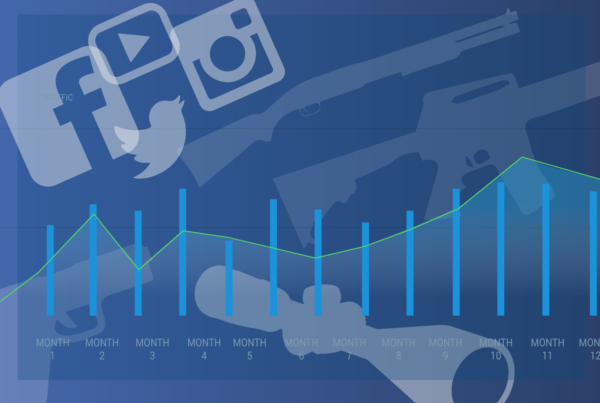
Starting an inbound marketing program is an exciting time in your business’ history. You’re convinced that an inbound strategy is what you need to grow your business and build your brand. Hopefully by now, you’re well aware of the time, dedication and work that needs to go into inbound and you’re motivated to get the train moving down the track.
Inbound marketing is like a locomotive. It takes time to build momentum and to get your program up to speed.
Your content must tell a story and help your buyer persona solve a problem that answers their most burning questions. Unlike “push” or outbound marketing—where it is an ad and a prayer—inbound marketing builds trust and helps you build an audience of promoters, admirers, and customers over time.
If you’ve pulled the trigger on inbound marketing and are waiting to get started—here is what you can expect in your first three months.
1. The Hubspot setup
When implementing your inbound program, the first thing you need to do after signing up with an inbound marketing agency is to get Hubspot set up. We obviously use Hubspot for our marketing automation because it gives us unmatched efficiency, intelligence, and the time-saving tools to conduct everything we need to do inbound marketing accordingly.
A typical Hubspot set up looks like this:
- Install tracking code on your website
- Create a subdomain for your landing pages
- Set up CANSPAM settings for email marketing
- Load in your buyer personas
- Connect your social media accounts
- Setup email template
- Create your calls to actions
- Create your workflows
- Create your forms and landing pages
- Integrate your CRM
- Create a blog subscription sign up form
The above list is just for Hubspot. Depending on what kind of shape your website is in—you may also need to do the following:
- Consolidate your content
- Search engine optimize each page with appropriate page titles, descriptions, and image titles
- Confirm that your website is mobile-ready or make it responsive
- Add in social signal buttons for sharing
- Set up additional social media channels
- Develop your brand
- Redesign your website
Much work goes into properly setting up your website and Hubspot investment. Most of the setup work can be done by your current web manager or IT person to save on costs.
2. Get an offer up quickly
To get your inbound marketing program moving down the tracks faster, you’ll need to create an offer with a form and a landing page and the necessary blog articles to begin driving traffic and capturing leads.
Empty out your desk, pull up old powerpoints, use anything that can be repurposed into an offer to generate leads while you work on other premium offers.
If your website is brand new, you can expect Google to “sandbox” it for a month or two before you start to see your website showing up on SERPS (Search Engine Ranking Pages).
Within this period, you should be creating as much content as possible to increase your website’s digital footprint. The more pages you have—a higher ranking authority you will receive. To see where you stand right now, check out Hubspot’s marketing grader.
3. Blog on the keywords that have a low difficulty to rank
To get some quick wins, start by going after the most searched terms with the lowest difficulty. Write content based on those keywords and use them in your titles and content. By targeting these words, you’ll be able to generate traffic in short order as you wait for your website to start gaining momentum. Write other pieces of content based on high traffic/high difficulty keywords to augment the lower trafficked keywords. There is nothing better than seeing your keywords rise to the top of the rankings quickly.
If your website is established, you may need to spend time optimizing, doing some interlinking or repurposing past content pieces to bring them up to date. These tactics can also drive traffic fairly quickly.
4. Research and grow your audience
Start growing your audience by taking to Twitter. Twitter is an excellent way to gain traction in your first few months of inbound. Begin by following others in your category. Favorite their tweets and retweet their content when possible. This will allow your feed to start generating activity quickly. You also need to be sharing your content as well—even if you only have 1-2 posts. Share 2-3 times daily, and tweet at least four+ times a day. Utilize the 80/20 rule which means your Twitter feed should consist of eighty percent of other people’s content and only twenty percent of your content.
Begin to identify whom the centers of influence are and create lists based on your buyer personas. I recommend BuzzSumo, Right Relevance, and TweetFavy to help you identify the highest ranking people in your category. Learn what content is getting the most traffic and try to write about those trends to gain followers and increase traffic.
5. Have the right mentality moving forward
The above points are three whole months of work that will give you a firm understanding to intelligently analyze what’s working and what’s not as your inbound marketing program grows. It is important to have the right expectations moving forward. Inbound is about building relationships and trust—and like any relationship, it takes time to build and nurture. This is the fundamental reason why inbound marketing is so effective.
After three months, you may start to feel like giving up, or you may lose motivation. Inbound marketing is a marathon and not a sprint. You will see results and you will gain traction in time. Most people give up just when things hit an inflection point, and traffic goes through the roof, so stick with it. Consistent creation of relevant content, social media best practices and email nurturing will bring results and create a bedrock of internet marketing fortitude that will last for years. And not only that, it will completely annihilate your competitors chances of winning the internet marketing game in your category.
For quick boosts of traffic, you can always allocate budget to PPC while you wait for your organic traffic to rise to the top of Google. Depending on your goals, you can always mix a little outbound tactics with your inbound to create some activity. If you write a blog post that gets some decent shares and traffic, consider boosting on Facebook or sponsoring it on LinkedIn to magnify its results.
In conclusion, the first three months of inbound is based on setup, analysis, and research. Much of the work can be done upfront and in-house. After you have Hubspot setup, created an offer and targeted low-difficulty keywords—focus on growing your network and remember to keep a marathon mentality.
Once your inbound marketing program is up to speed—there’ll be no stopping it.






Hey Josh! Great post. 🙂 I shared it on Twitter just now.
Question about this…
‘If your website is brand new, you can expect Google to “sandbox” it for a month or two before you start to see your website showing up on SERPS (Search Engine Ranking Pages).’
Is that really how SERPs work? I have never heard of the ‘sandbox’ effect before… does it always take a month or two for Google to start pumping in traffic?
I have seen this happen with a couple of my own blog posts. I just didn’t realize there was a term for it.
Hi Brent, the “sandbox” has been contested, but in my experience it exists. Here is a link to more info on it: https://moz.com/blog/how-to-beat-the-google-sandbox You can also do your own search and it will turn up several results. Thanks for sharing!